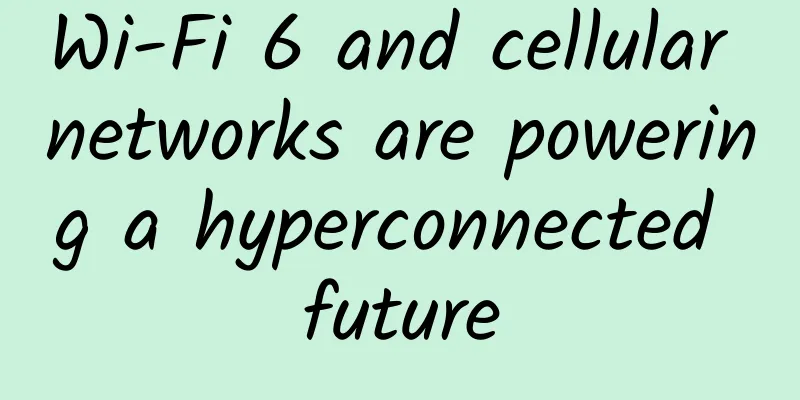NIST aims to make frequency sharing more efficient for wireless networks

|
Machine learning solutions will help different radio protocols, such as Wi-Fi and LTE, work together more efficiently in the same wireless spectrum. A machine learning scheme developed by the National Institute of Standards and Technology (NIST) has the potential to significantly improve the way 5G and other wireless networks select and share communication frequencies. The researchers claim that NIST's scheme could make the process of sharing communication frequencies up to 5,000 times more efficient than trial and error methods. The idea behind the NIST system is that radios can learn from experience about their network environment, rather than simply selecting frequency channels based on trial and error, as is done today. Under certain environmental conditions, "the algorithm can learn which channel provides the best results," NIST said in an article on its website. “The scheme can be programmed into transmitter software for many [different] types of networks in the real world,” the team said. Essentially, the computer-simulated algorithm is a formula that maps prior experience with ambient RF conditions, which can include, for example, the number of transmitters operating within a channel (a group of adjacent frequencies). The article says: "…if the transmitter chooses an unoccupied channel, then the probability of a successful transmission goes up, resulting in a higher data rate. Likewise, when the transmitter chooses a channel without much interference, the signal will be stronger and you will get a better data rate. The transmitter remembers which channel provided the best results and learns to choose that location the next time a clear signal is needed." This is different from the way things work today. That is, the radio simply tries to find an open frequency and then communicates with radios of similar protocols. In complex cases, techniques such as Wi-Fi, frequency hopping and beamforming are used to optimize the channel. Where NIST’s machine learning technology shines, the researchers explain, is in shared spectrum, such as shared Wi-Fi through licensed spectrum assisted access (LAA). LAA is LTE spectrum in unlicensed spectrum, called LTE-U, at 5GHz. In the combination of Wi-Fi and LAA at the same frequency, the protocols are different: the radios can’t talk to each other to coordinate their work, and the busier the band, the more chaos there can be — transmissions running into other transmissions. But it would be better if all the radio receivers could get better at choosing their slots, by learning what works and what doesn’t. "This could potentially make communications in unlicensed spectrum more efficient," NIST engineer Jason Coder said in the paper. In fact, NIST claims it “could help 5G and other wireless networks select and share communications frequencies about 5,000 times more efficiently than trial-and-error methods.” The key word here is “sharing,” because in order to increase communications within a limited spectrum, more sharing must occur — users such as the Internet of Things or media streaming are all competing for the same metaphorical asset. As the Internet of Things and digital technology continue to grow, a combination of unlicensed and licensed spectrum, as is the case with LAA, will likely become more common. (Unlicensed spectrum is spectrum that is not assigned to a specific user, such as a mobile network operator; licensed spectrum is allocated based on successful bids in auctions.) In the NIST scenario, competing transmitters “each learn to maximize the network data rate without communicating with each other.” Thus, multiple protocols and data types, such as video or sensor data, or Wi-Fi and mobile networks, can collaborate. NIST’s scheme greatly simplifies the process of assigning the best channel to a transmitter. According to the paper, exhaustive effort [using trial and error] to determine the best solution would require about 45,600 trials, while this scheme only needs to try 10 channels to select a similar solution, a mere 0.02 percent of the effort.” NIST researchers presented their findings at the IEEE 91st Vehicular Technology Conference. |
Recommend
5G independent networking commercialization will be realized within this year
In March this year, the Ministry of Industry and ...
RackNerd: Memorial Day Special Package $22.89/year - Dual Core/2G Memory/30G SSD/4TB Monthly Data Transfer
RackNerd has launched a special package for Memor...
Summary information: HostMem/51Cloud/Qingyun Internet/TTcloud/Asia Cloud/Qimi Cloud
July is already halfway through, and the hot summ...
How 5G and IoT will revolutionize the world
Imagine a world where we can download a movie in ...
DediPath has a 25% discount on the first month, VPS starts at $0.87 for the first month, multiple data centers in Los Angeles/New York, etc.
DediPath has launched a 25% discount promotion fo...
Enrich online and in-app user experience and increase ROI through optimized video
Today's consumers are more eager than ever to...
Huawei aims to be a smart city incubator providing basic energy
During the just concluded National People's C...
Network Lifecycle Management Guide
The network lifecycle management process helps ne...
Taking photos has never been so easy. Huawei Enjoy 10S freezes the wonderful scenery with one click
If we choose the most used function of mobile pho...
5 Things That Can Slow Down Your Wi-Fi Network
Wi-Fi networks can be slow due to the use of olde...
Adding more content rights makes 5G packages more popular
China Telecom's 5G package users have accumul...
Computer Network Architecture
[[416546]] The formation of computer network arch...
DMIT: Los Angeles CN2 GIA large bandwidth quarterly payment starting from $28.8, 1-10Gbps bandwidth, optional high defense
How about DMIT.io? This is a foreign hosting comp...
Blockchain 3.0 era: All your current cognition will be overturned
From the time the value of blockchain was discove...
Hosteons: OpenVZ/KVM VPS hosting 50% off, $13.5 per year, multiple data centers in Los Angeles/New York
The last time I shared information about Hosteons...









